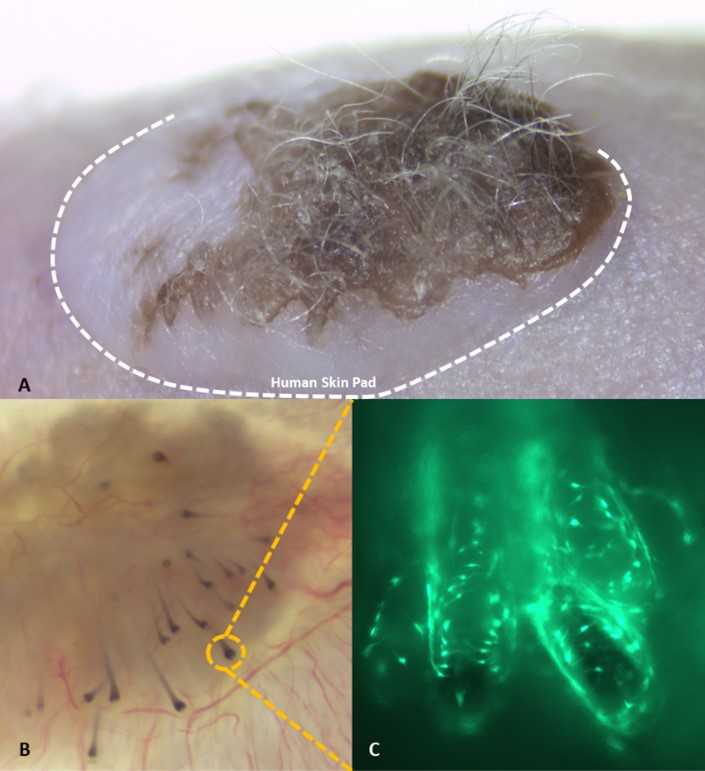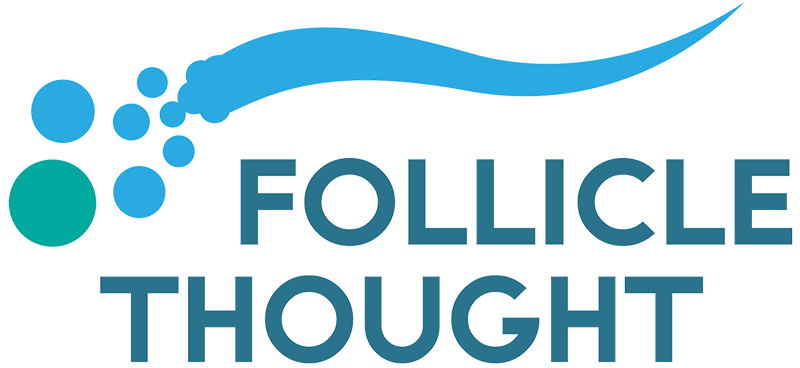Stemson Therapeutics – iPSCs for Hair Regeneration
Earlier this month, Stemson Therapeutics announced its hair follicle regeneration research advancement.
What is Stemson Therapeutics Working On?
The company is focused on developing a cell therapy solution for hair loss. They use autologous (meaning from the self) induced pluripotent stem cells (iPSCs) to engineer follicular units to form new hair follicles. These will be designed for treating all types and stages of hair loss. These engineered follicular units are created through Stemson’s proprietary bioprinting process, which merges hair follicle cells with biomaterials, resulting in a 3D structure that mimics the natural shape of hair follicles. Once these are transplanted into the scalp, the hope is that the follicular units will integrate with the recipient’s skin and mature into fully developed hair follicles, replacing hairs that were previously lost.
The engineered units are designed for ease of use, allowing for precise placement into the skin with the standard methodologies currently used in hair transplantation. Moreover, their structure promotes the healthy growth of hair follicles, ensuring the correct orientation and the emergence of the hair shaft through the skin.
What Progress Has Stemson Made?
In 2019, Stemson demonstrated that hair follicles grown from human stem cells could grow when combined with mouse cells and then transplanted onto mouse skin. In this most recent advancement, Stemson has shown that an all-human cell solution can generate new human hair follicles in human skin that were explanted onto immunodeficient nude, humanized mice (Figure 1).

Figure 1. A. Hair-bearing human skin xenograft on an immunocompromised nude mouse 10 weeks after transplant of Stemson-engineered follicular units. B. An image of an excised human skin xenograft showing new hair bulbs. C. Fluorescent image showing the labeled engineered follicular units responsible for generating the human hair follicles.
Stemson’s founder says “Now that we have achieved that milestone, I am excited to move us forward into the final development before testing in human trials.”
Reflections
Follicle Thought has covered Stemson Therapeutics news here, here, and here. While it is exciting to see Stemson move closer to human trials, it will likely be some time before we can expect to see any clinical results. Furthermore, other researchers are also progressing in this field (check out our interview with Xunwei Wu), so it will be interesting to see how fast this sector progresses.
An interview with Kevin D’Amour, Chief Scientific Officer of Stemson Therapeutics, was conducted on February 15th by Cell and Gene Therapy Insights. You can read about that on their website.
Let us know what you think about Stemson Therapeutics and hair regeneration research in the comments below.


What is the best companies on the way to produce a good treatment on the 3-4 Years coming?
I don t know if I m waiting or I go for implants.
Best from Belgium.
Anything new to market in 2024?
No mention at all on time frame to clinical trials anywhere?
Is there some compnies who will be ready dor a treatment on the 3-4 years coming
This is all great news, however I was a little let down when I heard they are planning for clinical trials in 2026. But the way they have been talking I wouldn’t be surprised if they were to initiate the trial at the end of this year (doubt it though). They have been transparent with us and have some serious VC backing them along with a group of serious scientist so I wouldn’t doubt if this were to be a success one day and to rid our battle with hair loss once and for all. In the meantime I hope other treatments can be available to the market sooner to help aid the fight in the meantime (Amplifica, Pelage etc).
I’m gonna be first in line when this comes out in 30 years.
In Turkey they are already using this method on patients and they had good results too.
Hello Sid!
Which method is offered in Turkey? It would be nice if you could give some concrete information 🙂 Thanks in advance!
Growing hair using all human cells on human skin is an incredible advancement ( even if it was on a mouse) and basically sets them up now to steamroll through trials. Cant really see this failing now as there as they are where they need to be now in terms of medical advancement. Only need to prep for and get through trials which i know will take a frustrating amount of time 4-5 years. what do you guys think, is there anything that could come up in human trials that could prove to be a stumbling block for stemson?
Great news. Slow but steady progress. No unrealistic timelines from stemson and none of the let-down that comes with. Looks like they are finally closing in on the ideal solution for trials. Thank you for your service to the HL community FT.
Admin being in the space how long would you think it’ll be for this to come to market? 2030?
lets see who is faster, Tsuji or Stemson
Unfortunately, I think Tsuji will not be what we expect and I don’t want to be pessimistic… But if we talk about hair cloning I would only trust Stemson, but of course taking into account that after clinical trials, the practice will be available by 2030 or by 2040… we will die with desire. And I think it is not that complicated, we know how to multiply cells, which is already a solution to replace the cells affected by DHT in the hair follicle and although hair cloning is more complex, we also know the mechanism to form a follicle from 0 from the epithelial and mesenchymal cells of the skin, the problem is not performing a test on a volunteer person to check the results
https://asia.nikkei.com/Business/Health-Care/Hair-loss-treatment-Japan-s-Aderans-signs-deal-with-U.S.-startup
https://www.businesswire.com/news/home/20240305822370/en/Stemson-Therapeutics-and-Bosley-Parent-Company-Aderans-Sign-Exclusive-Hair-Regeneration-Licensing-Deal
Been heard from the early 70’s that we can get hair on mices, even humans by now. Then again… the void. Since the late 90’s we heard of hair cloning and stem cells, but, yet again, thirty years later, nothing, not a single treatment have shows his nose. Which make skeptical about the future, even far future… Almost every week we heard about a new discovery that can stop baldness in 5-10 years, news medicals compounds in developpement, monetary funds raise by the big companies (Amplifica, Stemson…), does all this have a basis ? A “”cure”” or better treatments are really on the horizon ? Or will we have to, like in the 70s, wait 50 years to hear about mice with human hair?
Please only respond if you have relevant and constructive answers, may this be beneficial for everyone.